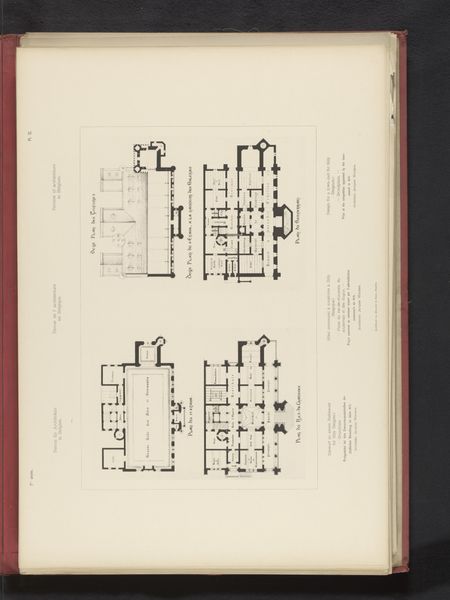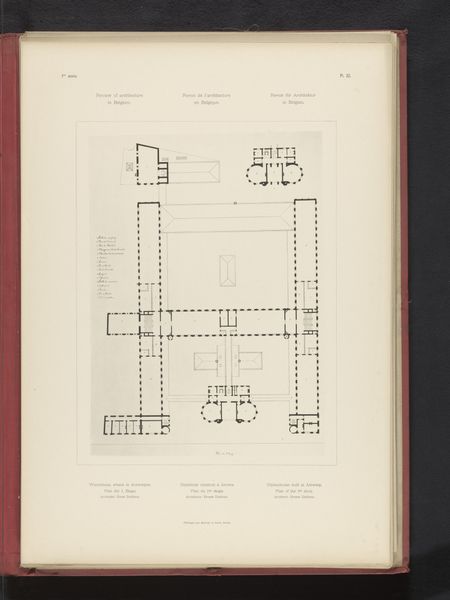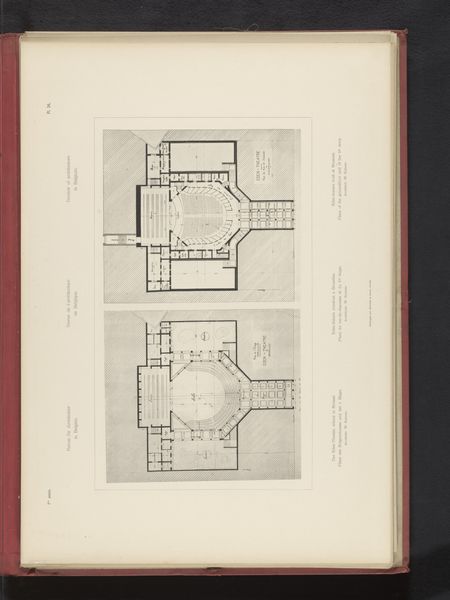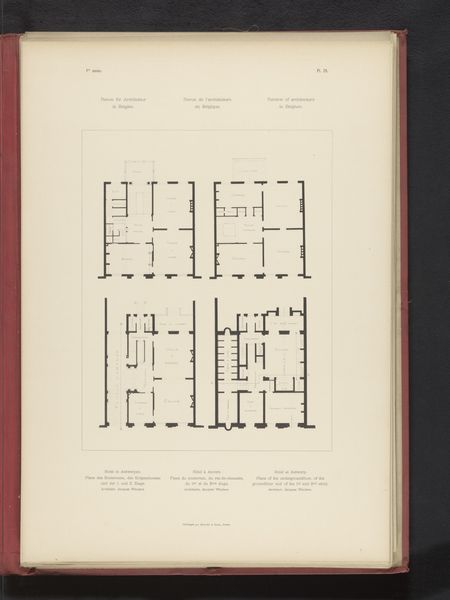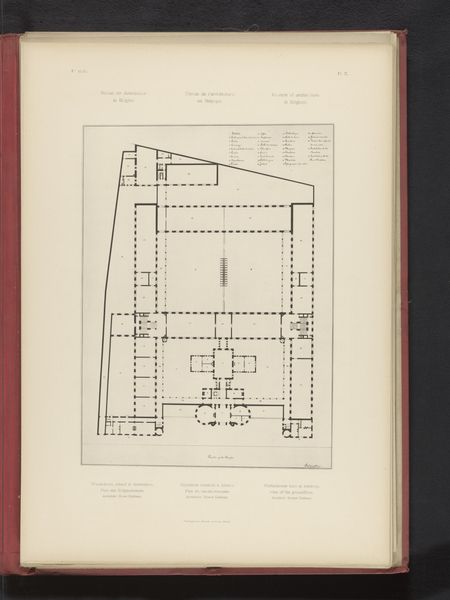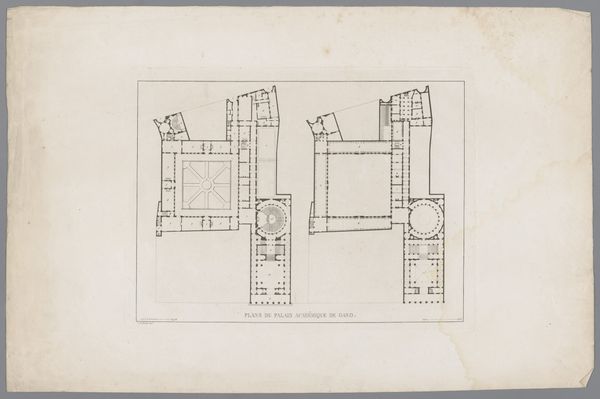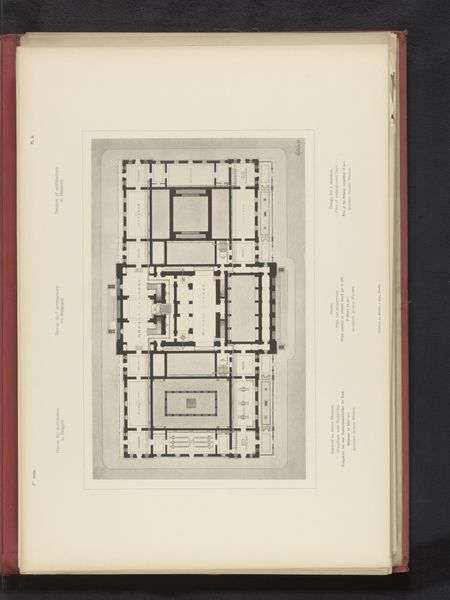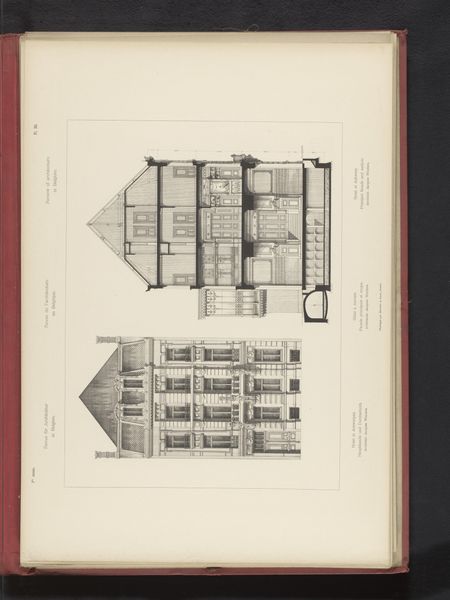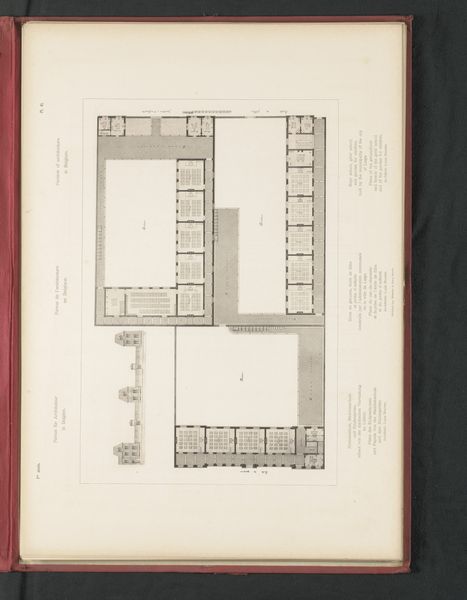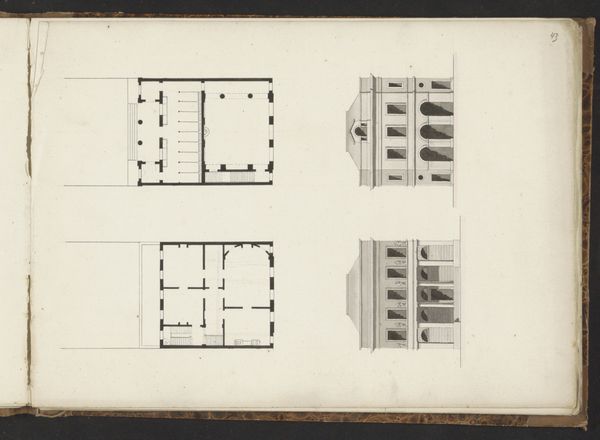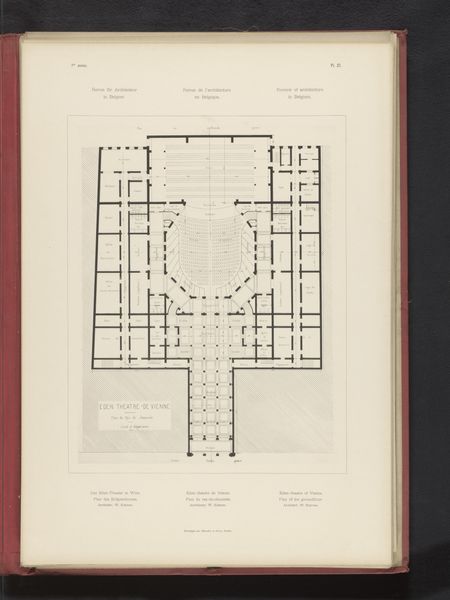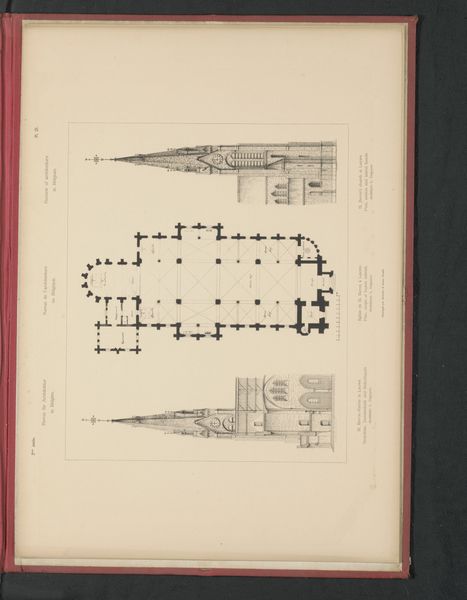
Reproductie van een plattegrond van de kelder, begane grond, eerste en tweede etage van een school aan het Joseph Lebeau plein in Brussel, door Émile Janlet before 1893
0:00
0:00
drawing, print, paper, architecture
#
drawing
# print
#
paper
#
geometric
#
cityscape
#
academic-art
#
modernism
#
architecture
Dimensions: height 362 mm, width 218 mm
Copyright: Rijks Museum: Open Domain
Curator: So, here we have a fascinating reproduction of a floor plan by Émile Janlet, dating from before 1893. It depicts the cellar, ground floor, and upper floors of a school located on Joseph Lebeau Square in Brussels. Editor: My first impression is a sense of cool detachment. It’s precise, meticulously drafted. But also somehow sterile – almost unsettling in its clinical presentation of space. Like dissecting a body. Curator: Indeed. The materials – a drawing reproduced as a print on paper – point to a process of dissemination, right? Think of the labour involved, the architectural drafting skills, the printing. These plans served a very specific function in the school's construction, reflecting the need for standardization and rational design typical of educational institutions at that time. Editor: Yes, but let’s consider what is missing: human presence. We only see the shell; an empty vessel. Perhaps Janlet focused so diligently on structure that emotion, feeling—the messy realities of lived space—evaporated from the design itself? Schools ought to brim with vitality, energy...but here... Curator: Perhaps, though focusing on the process reveals a very specific vision of education – one shaped by order and control. Notice how geometry and repetition play out, each level offering slight variations, yet reinforcing a centralized organization. Think of the influence this architecture had on shaping behaviour. Editor: Still, there’s a haunting element in that absence, isn't there? Like a ghost blueprint of vanished lessons, echo of students long departed… The mind fills with possibilities — joyous shouts and whispers or enforced silent discipline...all played out within these hard-lined boundaries. Curator: Absolutely. These drawings tell a story about labor, urban development, and even educational reform. They embody modernism through geometric form. Consider their availability as prints — democratizing architectural knowledge and inspiring replication across many projects. Editor: Ultimately, the magic might reside not in what Janlet intended, but what emerges unbidden as one stands before his work, no? The intersection of line, space, intent, interpretation and a fleeting brush of emotion on the canvas that memory paints anew with each viewing… Curator: That’s a very artful interpretation, indeed.
Comments
No comments
Be the first to comment and join the conversation on the ultimate creative platform.
